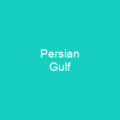Tehran is the capital of Iran and Tehran Province. It has a population of around 8.7 million in the city and 15 million in Greater Tehran. In the Classical era, part of the territory of present-day Tehran was occupied by Rhages, a prominent Median city.
About Tehran, Iran in brief

Tehran’s most famous landmarks include the Azadi Tower, a memorial built under the reign of Mohammad Reza Shah of the Pahlavi dynasty in 1971 to mark the 2,500th year of the foundation of the Imperial State of Iran, and the Milad Tower, the world’s sixth-tallest self-supporting tower which was completed in 2007. There are various theories pertaining to the origin of the name Tehran. Some texts in this regard claim that the word Tehran in Persian means \”warm mountain slope\”. The ancient Parthian town of Tiran was a neighbour to the town of Mehran, and both of these were mere villages in the suburbs of the great city of RayRhages. Mehran is still extant and forms a residential district inside the Greater Tehran, as is also Ray—which forms the southern suburbs of Tehran. Tehran has an international airport, a central railway station, a bus rapid transit system, trolleybuses, and a large network of highways. The majority of the population are Persian-speaking people, but there are large populations of other ethno-linguistic groups who live in Tehran and speak Persian as a second language. The capital has been moved several times throughout history, and Tehran is the 32nd national capital of Persia. Large-scale demolition and rebuilding began in the 1920s and Tehran has been a destination for mass migrations from all over Iran since the 20th century.
You want to know more about Tehran, Iran?
This page is based on the article Tehran, Iran published in Wikipedia (as of Jan. 01, 2021) and was automatically summarized using artificial intelligence.







